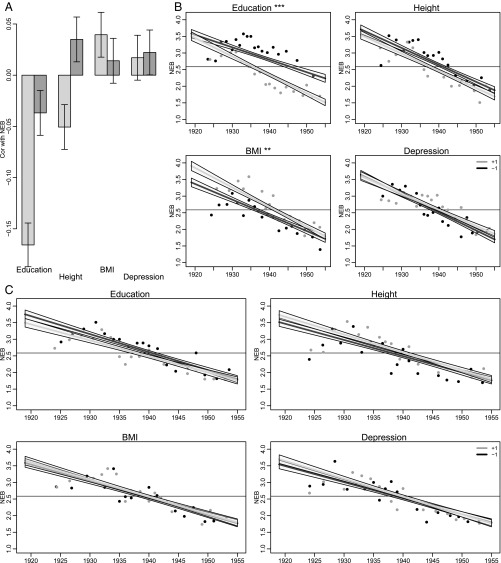Fig. 2.
Association of selected phenotypes and corresponding PGSs with fertility. (A) Overall association with number of children ever born for all birth cohorts. (B and C) Birth cohort differences in associations between number of children ever born between both standardized phenotypes and standardized polygenic risk scores among non-Hispanic whites in the HRS, 2012 (n = 8,855; restricted to respondents who have genotypic data and valid phenotypic responses). The horizontal axis depicts birth cohort, whereas the vertical axis is the predicted number of offspring conditional on an individual’s birth year and either phenotype or PGS (Eq. 2). The lines show fitted values for those at 1 SD above (gray) and below (black) the mean. The horizontal line shows the mean number of offspring in the sample. Points are based on binned means for two groups of respondents (standardized value below −1, black; standardized value above 1, dark gray). For each group, the distribution of birth years is divided into 20 subgroups with approximately equal numbers. Plotted points are the mean birth year and response for these subgroups. B considers standardized phenotypes. The number of predicted offspring is lower for later birth cohorts. One important observation is that this decrease in the number of offspring is driven by the more educated. C considers standardized PGSs. The number of offspring does not appear to be changing as a function of PGSs over the birth cohorts.

